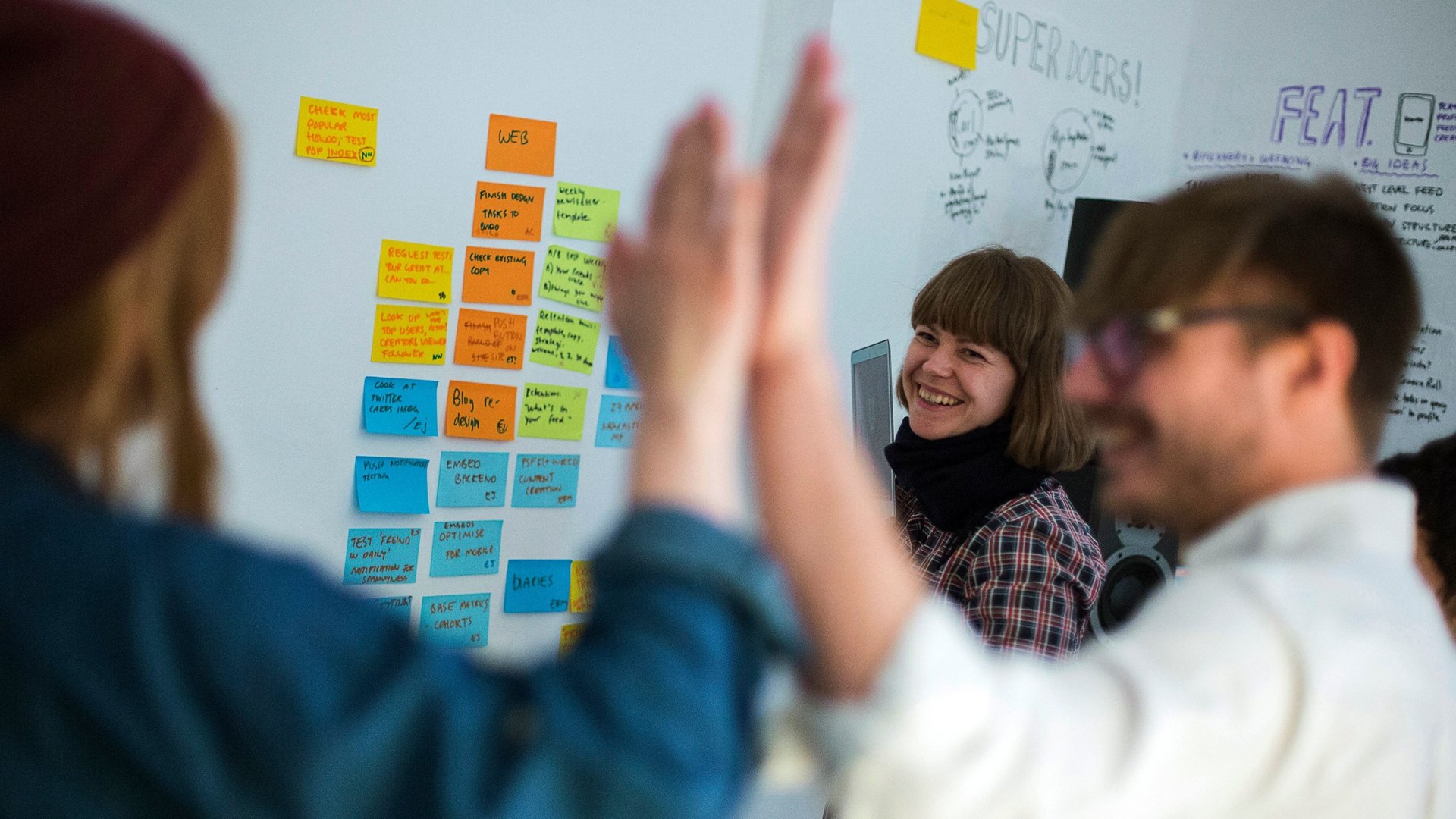Giving employees meaningful development opportunities doesn’t have to be expensive
A millennial, a GenXer, and a baby boomer all walked into a bar.


A millennial, a GenXer, and a baby boomer all walked into a bar.
No, really! It happened last night. I was the GenXer.
The millennial was talking about how he wanted to find a job where he could have “real impact.” The Boomer rolled his eyes, and actually said, “I hate managing millennials.”
The millennial shifted uncomfortably in his seat and then changed the subject.
This is the kind of tension I hear all the time when I visit companies. My response is always the same. I think that millennials and Gen Z are shining a light on what’s good for all of us. Who wouldn’t want to have meaning and impact in their work? I know I do.
Most companies are really bad at providing personally meaningful opportunities, which is part of why 70% of employees are dissatisfied at work.
Lack of growth opportunities is the number one reason employees leave. Replacing an employee is expensive—it typically costs between 20% and 30% of his or her salary—and so refusing to offer meaningful professional development seriously can cost you.
Here are five examples of companies that have taken their employees’ professional development to heart.
Getting to the heart of the matter
In order to link up her young, 60-person workforce to the development opportunities they so crave, Aria Finger, the CEO of DoSomething.org, takes it upon herself to keep a running tally of what matters to them. She asks, What’s important to you? Do you want to become a better speaker? Do you want a byline? Do you want a fellowship?
This approach helps her employees feel seen and heard (in fact, they are seen and heard!).
Own it
Instead of giving employees a options for where to host a learning offsite, Sports social network ZogSports CEO Rob Herzog decided to let his employees “own” their learning offsite. He appointed a five-person team made up of employees in different departments and at different levels, gave them a budget and a theme, and the rest was up to them.
The book club
Nathan Rosenberg, CEO of management consulting firm Insigniam, started a book club in which all of his 65 employees read and discuss two books a year.
Rosenberg chooses books that he believes will provide lessons and learnings his employees can apply to their jobs and that will lead to provocative conversations with their colleagues. His two most recent selections were Atlas Shrugged by Ayn Rand and Getting Naked, a management book by Patrick Lencioni.
Connecting and learning through reading may not be a “novel” idea in school, but at work, it sure is.
Sidehustle U
Fashion designer Rebecca Minkoff has some seriously lucky employees. Not only is their boss concerned that they, “constantly stay inspired and be their own entrepreneurs within their jobs and their life,” but she is also willing to invite her own personal contacts in to mentor her staff. As Minkoff told me, “It’s important to take risks and be fearless when wanting to achieve your goals and dreams.”
Do, model, coach, enable
When new employees join leadership consulting firm SYPartners, get started on new projects, or are promoted to a new role, they meet with their managers in a meeting called “Do, Model, Coach, Enable.”
In this meeting, the manager helps to identify where the employee feels confident jumping in, and where more coaching might be needed. From these sorts of meetings, a “social contract” is written, whereby employees are committed to supporting someone else through his or her learning curve. Both mentor and mentee advance their knowledge, wisdom, and, yes, of course, their relationship.
And it’s the relationship that makes it human.
Because professional development, like every other piece of the workplace, is based on one thing—honoring relationships. When we take the time to do that—by talking to employees, giving them learning opportunities that mean something to them (not to you!), you are not only growing their skills and insight.
More and more smart managers are learning that inviting a team member’s personal obsession into day-to-day operations is not only nothing to fear, it can actually be a boost. The employee feels whole, the team experiences an infusion of passion, and they are likely to retain that employee a little longer—something certainly good for the bottom line.
Which is to say, by taking professional development personally, you are also designing a workplace that’s good for people, great for business, and just might change the world.
Erica Keswin is the author of the forthcoming book “Bring Your Human to Work: Ten Sure-Fire Ways to Design a Workplace That is Good for People, Great for Business, and Just Might Change the World.”